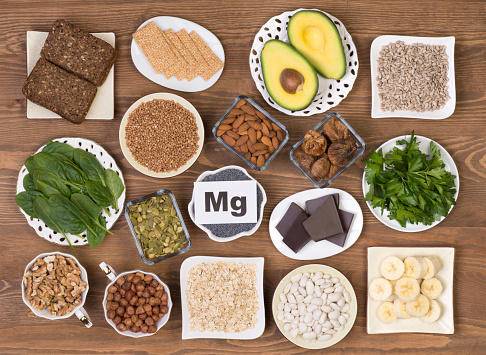If you or a loved one suffer from having high cholesterol, you know there’s a whole list of foods that your doctor has probably told you not to eat. There are plenty of foods that can lead to high cholesterol, but what about the foods you should eat? Rather than focusing on what not to do, let’s take a look at some of the things you can eat that will help reduce bad cholesterol (LDL) – all of which are still pretty tasty. So, here are seven foods you can feel good about eating.
Nuts
Here’s a food that’s perfect for snacking, and will help reduce your cholesterol levels. A study conducted by the American Journal of Clinical Nutrition showed a significant reduction in LDL when participants consumed walnuts or almonds. Although these nuts are good for your heart, they are high in calories, so portion control is key here.
Oats
Changing up your breakfast a bit could be a big factor in lowering cholesterol. Adding two servings of oats to your morning meal could reduce LDL by about 5% in just six weeks. The key player in oats is a substance called beta-glucan that absorbs LDL, which is later excreted by the body.
Salmon and Fatty Fish
If you’re not getting sufficient amounts of Omega-3 in your diet, here is the perfect opportunity to increase your fish oil intake while decreasing your bad cholesterol. Omega-3 has been shown to fight heart disease, dementia, and a number of other health risks. When you replace saturated fats with the ones found in salmon, sardines, and herring, you may be able to raise HDL (that’s the good kind) by as much as 4%.
Beans
Surely you heard the little rhyme when you were a kid. Well, beans truly are good for your heart. Research was conducted at Arizona State University Polytechnic and they discovered that adding half a cup of beans to soup has the potential to reduce total cholesterol by as much as 8%.
Garlic
Not only is garlic capable of making just about any dish delicious, but it’s also great for lowering LDL. It can help prevent blood clots, reduce blood pressure, and fight infections. New studies have found that it can help stop artery-clogging plaque early on by preventing cholesterol particles from clinging to artery walls. Two to four fresh cloves a day are recommended for maximum potency.
Spinach
Commonly referred to as a superfood, spinach is packed full of lutein which is found in dark leafy green vegetables and egg yolks. Lutein was already known for its many benefits to our eye health, but now research says that consuming just half a cup a day of foods rich in lutein can help your body guard against heart attacks by fighting off cholesterol invaders that may cause clogging.
Avocado
While not quite as diverse as garlic, avocado is delicious, versatile, and a good source of monounsaturated fat, which is a type of fat with the potential to raise HDL while lowering LDL. Additionally, avocado is rich in beta-sitosterol, a plant-based fat that lowers the amount of cholesterol the body absorbs from food. Like nuts, these tasty fruits are a little high in calories, so moderation is key here once again.
Eating healthy often gets a bad rap for being bland or boring, but all of these foods – especially paired with the right recipe – can be made into an amazing meal. There are many great websites that have several terrific recipes, so take a look around and find the heart-healthy recipe that’s perfect for you. And, if you’d like to learn about the latest clinical research for high cholesterol, click here.














